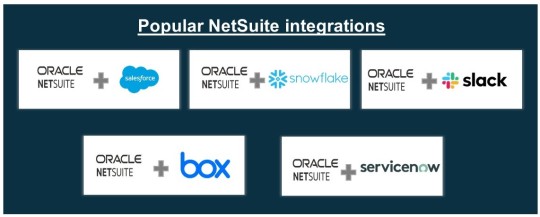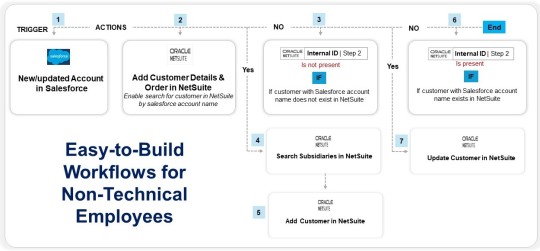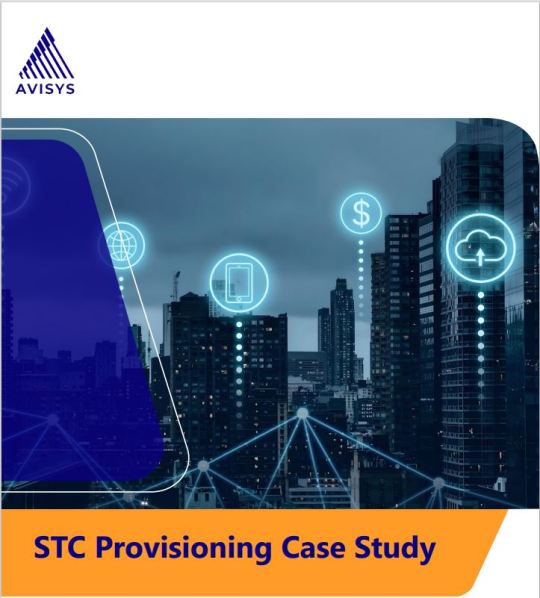#ordermanagement
Text
Know both the inventory and order management plugins in one place.
Get the best order and inventory management plugins for your WooCommerce store.
2 notes
·
View notes
Text
Enhancing Customer Experience: The Power of Order Taking Services by Call2Customer
In today's fast-paced world, where consumers expect efficiency and convenience at every touchpoint, businesses are constantly seeking ways to streamline their operations and improve customer satisfaction. One crucial aspect of this endeavor is the seamless handling of orders, which can significantly impact a company's reputation and bottom line. Recognizing the importance of efficient order management, Call2Customer offers a comprehensive Order Taking Service designed to elevate customer experience and drive business success.

At the heart of every successful business lies a smooth and hassle-free order processing system. Whether it's a retail store, restaurant, e-commerce platform, or any other business entity, the ability to capture orders accurately and promptly is indispensable. Call2Customer understands this fundamental need and goes above and beyond to deliver excellence in order taking services.
One of the key pillars of Call2Customer's Order Taking Service is its commitment to accuracy. Every order, regardless of its complexity or volume, is meticulously recorded and verified to ensure precision. This attention to detail not only minimizes errors but also instills confidence in customers, knowing that their requirements will be met with utmost reliability.
Moreover, Call2Customer's order taking agents are trained to provide personalized assistance to every caller, fostering a sense of trust and loyalty. Whether it's answering product inquiries, guiding customers through the ordering process, or offering tailored recommendations, these agents serve as invaluable extensions of the client's brand, delivering exceptional service at every interaction.
In addition to accuracy and personalized support, Call2Customer's Order Taking Service offers unmatched flexibility to accommodate varying business needs. Whether a business experiences fluctuations in order volume during peak seasons or requires multilingual support to cater to diverse customer demographics, Call2Customer adapts seamlessly to meet these requirements. This adaptability not only enhances operational efficiency but also ensures uninterrupted service delivery, irrespective of external factors.
Furthermore, Call2Customer leverages cutting-edge technology to optimize its order taking processes. From automated order entry systems to integrated CRM platforms, every tool is strategically employed to streamline operations and enhance productivity. By harnessing the power of technology, Call2Customer empowers businesses to stay ahead of the competition and deliver superior customer experiences consistently.
Beyond the operational benefits, Call2Customer's Order Taking Service also contributes to cost savings and revenue growth for businesses. By outsourcing order taking responsibilities to a specialized service provider like Call2Customer, businesses can eliminate the need for investing in additional infrastructure, hiring dedicated staff, and managing day-to-day operational challenges. This not only reduces overhead costs but also frees up valuable resources that can be redirected towards core business functions and strategic initiatives.
Moreover, by ensuring prompt order processing and timely fulfillment, Call2Customer helps businesses capitalize on sales opportunities and maximize revenue potential. Whether it's capturing impulse purchases, upselling complementary products, or promoting special offers, every interaction with a customer is leveraged to drive incremental sales and foster long-term customer relationships.
In conclusion, Call2Customer's Order Taking Service represents a paradigm shift in how businesses manage their order processing operations. By combining precision, personalized support, flexibility, technology integration, and cost-effectiveness, Call2Customer empowers businesses to elevate their customer experience and achieve sustainable growth in today's competitive landscape. As businesses continue to prioritize customer satisfaction and operational excellence, partnering with a trusted service provider like Call2Customer is not just a choice but a strategic imperative. With Call2Customer, businesses can confidently navigate the complexities of order management and unlock new opportunities for success.
#OrderTakingServices#Ordermanagement#Callcenterservices#Customerserviceoutsourcing#Onlineorderingsupport#call center solutions#call center services#call centre and support#call center problems#call center outsourcing
0 notes
Text
Tracking logistics metrics is crucial in the manufacturing and distribution industry to ensure smooth and efficient operations, which can impact a company’s success.

Logistics KPIs manufacturers and distributors should track.
> Inventory KPIs.
> Distribution KPIs.
> Order Management KPIs.
> Supply Management KPIs.
> Transport Management KPIs.
Enhance Logistics with Cloud ERP:
1. Financial Reporting.
2. Easy Maintenance.
3. Enhanced Staff Management.
4. Stock Visibility.
5. Improved Distribution.
6. Real-Time Tracking.
Acumatica Distribution Management Edition streamlines supply chain and logistics activities, integrating them with financial and sales data.
#logistics#KPI#manufacturing#distribution#metrics#ordermanagement#finance#stock#supplychain#tracking#orders#inventoryKPI#tech#operations#ERP
1 note
·
View note
Text
Discover how Nammabilling's textile billing software streamlines operations, automates invoicing, manages inventory, and enhances efficiency.
For more information, please visit our website: bit.ly/4cuZIe3.
#TextileBillingSoftware#BillingAutomation#InvoicingSoftware#InventoryManagement#PaymentProcessing#ReportingAndAnalytics#CustomerRelationshipManagement#ERPIntegration#OrderManagement#MultiLocationSupport#ComplianceAndTaxation#Scalability#Customization#TextileIndustry#StreamlinedOperations
0 notes
Text
Revolutionize Your USA Business with an Advanced Order Management System
An Order Management System serves as a virtual hub for consolidating orders, inventory, and customer information into a unified platform. Think of it as a centralized command middle overseeing each facet of your sales procedure. However, its scope extends beyond order tracking; a robust Order Management System, such as KanSoft, seamlessly manages inventory, customer support, and even return processes. This multifaceted tool has the potential to profoundly enhance your business's efficiency and elevate customer satisfaction.

Key Features of KanSoft’s Order Management System
KanSoft’s Order Management System (OMS) transcends the ordinary, tailored specifically to meet the evolving needs of today’s businesses. Here are the standout features that set it apart:
1. Real-Time Inventory Management: Bid farewell to inventory woes with KanSoft’s Order Management System. Enjoy up-to-the-minute visibility into stock levels, ensuring you're always equipped to meet demand without excess or shortages.
2. Automated Order Processing: Efficiency is paramount, and KanSoft’s OMS delivers. From order placement to fulfillment, the system seamlessly automates key steps, guaranteeing precision and swift execution.
3. Customer Management: Nurture customer relationships effortlessly with KanSoft’s OMS. By storing comprehensive customer profiles and order histories, the system enables personalized service and timely responses, fostering customer satisfaction and loyalty.
4. Analytics and Reporting: Empower your decision-making with actionable insights from KanSoft’s Order Management System. Dive deep into comprehensive analytics and reports, enabling you to make informed choices that drive growth and optimize operational efficiency.
In essence, KanSoft’s redefines order management, equipping businesses with the tools they need to thrive in today’s dynamic marketplace.
Why Select KanSoft for Order Management System?
Amidst a myriad of Order Management System (OMS) solutions, KanSoft emerges as a standout preference, prominent with the aid of its person-centric technique, scalability, and comprehensive characteristic set. It transcends mere order control; it serves as a catalyst for increase and operational efficiency . Opting for KanSoft’s OMS isn’t just a software upgrade; it’s a transformation of your entire operational paradigm.
The Journey to Implementation
Embarking on the journey of adopting a new system may seem daunting, but transitioning to KanSoft’s OMS is crafted to be seamless and uncomplicated. Here’s a roadmap to ensure a smooth implementation:
1. Data Migration: Effortlessly transfer your existing data to the new system utilizing KanSoft’s guided migration tools, ensuring a seamless transition without data loss or disruptions.
2. Training and Support: KanSoft extends comprehensive training and support services to equip your team with the knowledge and confidence needed to harness the full potential of the OMS. From initial onboarding to ongoing assistance, your team is supported every step of the way.
3. Customization: Tailor the system to suit your specific business requirements, ensuring that every feature aligns seamlessly with your operational objectives. Whether it's custom workflows, reporting structures, or integrations, KanSoft’s OMS adapts to your unique needs, empowering you to optimize processes and drive efficiency.
In essence, by choosing KanSoft’s OMS, businesses embark on a transformative journey towards streamlined operations, enhanced productivity, and sustainable growth.
Visit More Article -
Mastering Ionic Mobile App Development: A Comprehensive Guide for 2024
Mastering the Art of Android App Development: Insights from India’s Tech Vanguard
Empowering E-Commerce with Mobile Apps: The Kansoft Way
0 notes
Text
Top Automation Use Cases in Order Processing for Sales, Inventory, Finance, and Accounting Teams
Let’s take a look at how low-code user experience (UX) is enabling IT and business teams to quickly and efficiently connect ERP system with their CRM, e-commerce platform, and a plethora of other systems.
Create end-to-end automations throughout various applications, which will help you to optimize not just order processing but also your order-to-cash workflows.
Create Bi-Directional Data Flows with Different Teams that will Automate the Following Tasks

Bi-directional data flow is where order information is shared between different teams in both directions. Let’s take the example of a Bi-Directional Sync of Tools, Data, and Systems that can be created with Sales and different teams. Examine how our easy to build integration between Sales and different teams brings real-time data synchronization to power new efficiencies.
Order Fulfillment
From Sales to Fulfillment: When a sales order is entered into the system by the sales team, it immediately flows to the fulfillment team. This ensures that warehouse staff can begin preparing the order for shipment without delay.
From Fulfillment to Sales: If there are any issues with fulfilling an order (e.g., out-of-stock items), this information can flow back to the sales team. Sales reps can then inform customers promptly, offer alternatives, or adjust the order as needed.
Inventory Management
From Sales to Inventory: Sales orders impact inventory levels. When an order is placed, inventory levels are automatically adjusted, providing real-time visibility to the inventory management team.
From Inventory to Sales: If inventory levels reach a critical threshold (e.g., low stock), this information can flow back to the sales team. Sales reps can then prioritize selling products with higher availability or communicate potential delays to customers.
Customer Service
From Sales to Customer Service: Customer service representatives can access sales order information to provide accurate updates to customers inquiring about their orders. They can see order status, tracking information, and any special instructions from the sales order.
From Customer Service to Sales Tools, Data, and Systems: If customer service identifies patterns of common issues or concerns with certain products or orders, this feedback can be shared back with the sales team. Sales reps can then address these concerns proactively with customers.
Sales
From Sales to Sales: Sales reps may have multiple touchpoints with a customer. If one salesperson processes an initial order, another salesperson engaging with the same customer later should have access to that order history. This allows for a seamless customer experience and avoids redundant data entry.
From Sales to Marketing: Marketing campaigns can be informed by sales order data. For example, if a certain product is selling well, the marketing team can create targeted campaigns around similar products to capitalize on this trend.
Finance and Accounting
From Sales to Finance: Sales orders directly impact billing and revenue. This information flows to the finance team for accurate and timely invoicing.
From Finance to Sales: If there are payment issues or discrepancies, this information can flow back to the sales team. Sales reps can follow up with customers to ensure payments are made, preventing delays in shipping or fulfillment.
Production and Manufacturing
From Sales to Production: Sales orders drive production schedules. Manufacturing teams can see incoming orders and plan production accordingly.
From Production to Sales: If there are delays or changes in production that affect order fulfillment, this information can flow back to the sales team. Sales reps can then communicate with customers about any potential delays.
Marketing and Promotions
From Sales to Marketing: Marketing teams can track the success of promotions and campaigns through sales order data. They can see which promotions led to increased sales and adjust future campaigns accordingly.
From Marketing to Sales: If marketing launches a new campaign, sales teams should be aware of it. They can then align their sales efforts to support the campaign and drive sales for promoted products.
Cross-Functional Collaboration
Between Teams: Bi-directional data flow promotes collaboration between teams. They can work together seamlessly, sharing insights and updates in real-time.
Data Integrity: With bi-directional flow, data integrity is maintained. Any updates or changes made in one system are reflected accurately in the other, reducing the risk of errors or discrepancies.
Compliance and Audit
From Sales to Compliance: Accurate sales order data is crucial for compliance and audit purposes. This data should flow to compliance teams to ensure that all transactions meet regulatory requirements.
From Compliance to Sales: If compliance teams identify any issues or discrepancies in sales orders, this information can flow back to the sales team for correction or clarification.
Ready to automate your order processing workflow?
We are experts in legacy systems integration with modern analytics, AI, and automation platforms. Our No-Code, Low-Code Practice is empowering both IT and business teams from top Fortune 500 Companies to integrate their ERP system with their CRM, e-commerce platform, among countless other systems. Connect with us to see how we can empower your business teams to build end-to-end automations across these different apps without much technical hassle.
Benefits of Syncing Customer Data Between Your CRM and ERP System

Syncing customers between your Customer Relationship Management (CRM) system and your Enterprise Resource Planning (ERP) system is essential for maintaining accurate and up-to-date customer information across the organization.
Here are several reasons why syncing customers between these systems is beneficial:
Data Consistency: Ensuring that customer data is consistent across systems prevents discrepancies and confusion. When a customer updates their information in one system (such as their address or contact details), that information should be reflected in both the CRM and ERP to maintain accuracy.
Improved Customer Service: Syncing customer data allows sales, marketing, customer service, and accounting teams to access the same information. This means customer service representatives can have a complete view of the customer's interactions, orders, and preferences, leading to more personalized and efficient service.
Order and Sales History: When CRM and ERP systems are synced, sales teams can have access to customers' historical data, including past orders, payments, and invoices. This information is invaluable for sales representatives when engaging with customers, upselling or cross-selling products, and understanding customer buying patterns.
Efficient Order Processing: When a salesperson creates a new customer record in the CRM system, that data should seamlessly flow into the ERP system to enable efficient order processing. This integration ensures that orders can be processed quickly and accurately without manual re-entry of customer details.
Marketing Campaigns and Segmentation: Marketing teams can benefit from synced customer data by creating targeted campaigns based on purchase history, preferences, and behavior. CRM data can be used to segment customers effectively, and this segmentation can be applied in the ERP system for tailored marketing and promotions.
Financial Reporting and Invoicing: Syncing customer data ensures that invoicing and financial reporting are accurate. When a sale is made in the CRM system, it should automatically generate an invoice in the ERP system, linking the customer's account and purchase details.
Inventory Management: For businesses that manage inventory, syncing customer data helps in demand forecasting and inventory planning. Sales data from the CRM can inform inventory levels and purchasing decisions in the ERP system.
Streamlined Workflows: Automation of processes between CRM and ERP systems reduces manual data entry and the potential for errors. This streamlines workflows and allows teams to focus on more strategic tasks rather than administrative work.
Compliance and Security: Keeping customer data synchronized ensures compliance with data protection regulations. It also enhances data security by reducing the risk of data breaches that can occur when information is spread across disconnected systems.
Scalability: As a business grows, having synced customer data between CRM and ERP systems allows for seamless scalability. New sales channels, products, and customer segments can be easily managed with integrated systems.
0 notes
Text

#BakeryManagement#PosEase#SweetSuccess#BakedWithLove#OnlineOrders#CentralKitchen#EfficiencyInBaking#ProfitBoost#DigitalBakery#OrderManagement#TechForBakers#BakerySolutions
0 notes
Text

Kechie Inventory Management
Kechie Inventory Management stands out as a comprehensive inventory management software seamlessly integrated with other modules, such as Orders, Procurement, and Supply Chain Management. It delivers precise control over supply and demand dynamics, enabling the establishment of Min/Max levels and facilitating the seamless transfer of orders across various warehouse locations, encompassing open orders and trends. Every transaction is meticulously audit-trailed, offering immediate visibility and traceability. This robust system guarantees that every action is diligently recorded, ensuring comprehensive accountability for all transactions.
#InventoryManagement#SupplyChainSolutions#BusinessEfficiency#KechieERP#OrderManagement#ProcurementSoftware#WarehouseManagement#DataDrivenDecisions#AuditTrail#BusinessAccountability
0 notes
Text
#drivermonitoring#vehicletracking#gpstracking#fleetmanagement#lastmilesolution#biketracking#couriertracking#bustracking#trucktracking#mobiletrackingapp#livetracking#realtimetracking#fleet#nnexgen#schoolbusmanagement#ordermanagement#fleetowner#driversafety#fleettrackingsystem#construction#speedingalerts#vehicleidling#fmcg#gpstracker#deliverymanagement#driverbehaviour#schoolbustracking#transportation#maintenance#miladunnabi
0 notes
Text

Which section of CS-Cart is used for managing customer orders and processing transactions?
a) Addon Manager
b) Orders
c) Theme Editor
d) User Accounts
#quiz#scriptzol#letsconnect#CSCart#CSCartAddonsquiz#CSCartAddonpoll#followme#followforfollow#instadaily#follow4follow#like4like#CSCartAddon#CSCartOrders#ECommerceTransactions#OrderManagement#CSCartAdmin#OnlineRetail#CSCartQuiz#ShoppingCartManagement#CustomerTransactions#DigitalCommerce#CSCartInsights
1 note
·
View note
Text
Streamlining Order Processing with RabbitMQ
Discover how RabbitMQ, a powerful messaging queue system, can transform your e-commerce order management to enhance customer satisfaction and improve scalability.
Businesses often find themselves grappling with a myriad of challenges that hinder the smooth flow of orders, leading to delays, errors, and dissatisfied customers. From manual intervention to complex communication systems, these hurdles can impede productivity and compromise the overall customer experience. Fortunately, there is a solution that holds the potential to revolutionize order management: RabbitMQ, a powerful messaging queue system designed to streamline and optimize the order process. By leveraging the capabilities of RabbitMQ, businesses can overcome these obstacles and unlock a new level of efficiency, scalability, and customer satisfaction.
In travel booking systems, RabbitMQ facilitates seamless communication for tasks such as payment processing and reservation updates. In financial trading systems, RabbitMQ enhances real-time data flow between modules, supporting trade execution, risk management, and reporting for improved system performance. RabbitMQ optimizes e-commerce order processing by coordinating messages between services, ensuring efficient handling of tasks like inventory management and payment processing.
RabbitMQ : an essential tool for streamlining ecommerce order processing
RabbitMQ is a powerful open-source message-broker software based on the Advanced Message Queuing Protocol (AMQP), a messaging standard designed for seamless interoperability between applications and services.
RabbitMQ acts as a mediator or middleman between producers and consumers of messages. Producers create messages and publish them to RabbitMQ, while consumers retrieve and process these messages. The queue ensures that messages are stored until they are consumed, ensuring a smooth flow of information.
RabbitMQ enhances e-commerce efficiency by managing seamless communication between order processing services, ensuring timely and independent handling of tasks such as inventory management and payment processing.
Order Placement: When a customer places an order on the ecommerce platform, the order details are sent to RabbitMQ as a message.
Order Queue: RabbitMQ stores the order message in an order queue. This queue acts as a central hub for processing incoming orders.
Order Processing: Different components involved in order processing, such as inventory management, payment processing, and shipping, connect to RabbitMQ and consume messages from the order queue. Each component retrieves the order details from the message and performs its specific tasks asynchronously, independent of each other.
RabbitMQ facilitates seamless communication between various components of an order management system, ensuring messages are delivered in a timely and efficient manner. Its relevance lies in its ability to handle large volumes of orders and provide fault tolerance to ensure no orders are lost or overlooked. With RabbitMQ as a foundational element, businesses can overcome traditional bottlenecks, improve scalability, and elevate the overall efficiency of their order management systems.
Feature highlights
Asynchronous and parallel processing
With RabbitMQ’s message queuing mechanism, asynchronous processing is achieved by storing order details in a queue, allowing components like inventory management, payment processing, and shipping to handle tasks independently, ensuring smoother performance during peak times. Additionally, RabbitMQ facilitates parallel processing by distributing messages among multiple consumers, enabling tasks to be executed simultaneously on different threads or processes. This efficient approach ensures faster order processing and seamless user experiences in e-commerce applications.
Reliability
It supports message durability, persisting vital messages to disk to survive failures. Acknowledgment and rejection mechanisms prevent message loss during processing, while clustering and replication enable high availability. Queuing and publisher confirms and high availability further enhance reliability by decoupling producers and consumers and handling failed deliveries.
Scalability and Load balancing
RabbitMQ’s distributed nature allows for scalability and load balancing. By utilizing multiple instances or nodes, RabbitMQ can handle high order volumes and distribute the processing load across different components, ensuring optimal performance.
Message Routing and Filtering
RabbitMQ provides routing capabilities that enable selective message delivery to specific processing components based on predefined rules. For example, orders containing international shipping may be routed to a different component than local orders. This routing mechanism streamlines order processing by ensuring that each component receives relevant orders.
Clustering
It involves setting up a group of interconnected RabbitMQ nodes to enhance reliability and scalability. In a cluster, multiple RabbitMQ instances work together, sharing the message processing load and providing fault tolerance. This ensures high availability, load balancing, and fault tolerance, enabling the system to handle large workloads and remain operational even during node failures. Clustering allows for seamless communication and synchronization between nodes, making RabbitMQ a robust choice for critical e-commerce applications where message delivery and processing are vital.
Replicated queues
Replicated queues spread across multiple nodes in a cluster, ensuring continuous availability and fault tolerance. These mirrored queues prevent message loss and maintain service operation even during node failures, as messages can be handled by the mirrored queue on an available node. This feature is vital for critical parts of e-commerce systems, guaranteeing uninterrupted message processing and delivery in the event of disruptions or hardware failures.
Conclusion
RabbitMQ proves to be a valuable addition to the e-commerce platform, enhancing its reliability and scalability. RabbitMQ’s features like message durability, acknowledgment, and clustering provide a robust foundation for handling critical data and ensuring continuous operation, even during system failures or high traffic.
By integrating RabbitMQ Spurtcommerce gains access to a powerful message queuing system, enabling efficient communication between various components of the platform. Ultimately, this integration empowers Spurtcommerce to offer a seamless and responsive shopping experience for customers while facilitating seamless and reliable communication between different modules within the platform.
1 note
·
View note
Text
Improved Order Management: Seamless Tracking and Transparent Communication

CRM system centralised provide a centralised platform for managing orders, ensuring seamless tracking and transparent communication throughout the fulfilment process. Customers can easily access real-time updates on their order status, reducing uncertainty and fostering trust. Businesses can also utilise CRM data to optimise order fulfilment processes, minimising delays and improving overall efficiency.
Table of Content
Centralized Order Management for Seamless Fulfillment
Seamless Tracking and Enhanced Visibility
Transparent Communication and Fostered Trust
Data-Driven Optimization for Improved Efficiency
Key Benefits of Centralized CRM for Order Management
Centralized Order Management for Seamless Fulfillment

Customers demand efficient and transparent order fulfilment processes. A centralised CRM system provides a powerful solution to streamline order management, enhance customer satisfaction, and drive business growth.
Seamless Tracking and Enhanced Visibility

A centralized CRM system breaks down silos and provides a unified view of all order information. This centralized repository enables businesses to track orders seamlessly, from initial placement to final delivery. Customers can easily access real-time updates on their order status, reducing uncertainty and keeping them informed throughout the fulfillment journey.
Transparent Communication and Fostered Trust
Open communication is crucial for building trust with customers. A centralized CRM system facilitates transparent communication by providing a single channel for all order-related updates. Customers can receive automated notifications about order status changes, shipping details, and potential delays. This transparency fosters trust and enhances the overall customer experience.
Data-Driven Optimization for Improved Efficiency

A centralized CRM system not only improves customer experience but also empowers businesses to optimize their order fulfillment processes. By leveraging CRM data, businesses can identify bottlenecks, analyze fulfillment patterns, and make informed decisions to streamline operations. This data-driven approach minimizes delays, reduces errors, and improves overall efficiency.
Key Benefits of Centralized CRM for Order Management
Real-time order tracking: Provide customers with instant visibility into their order status.
Automated notifications: Keep customers informed about order milestones, shipping details, and potential delays.
Customizable dashboards: Gain insights into order fulfillment trends and identify areas for improvement.
Integrated reporting capabilities: Generate comprehensive reports to track fulfillment performance and make data-driven decisions.
Conclusion
A centralised CRM system is an invaluable tool for businesses that seek to enhance customer satisfaction, improve fulfilment efficiency, and drive business growth. By providing a unified platform for order management, real-time tracking, and transparent communication, centralised CRMs empower businesses to streamline operations, foster customer trust, and achieve their strategic goals.
FAQ's
1. What is a centralized CRM system for order management?
A centralized CRM system provides a unified platform for managing orders, enabling seamless tracking and transparent communication throughout the entire fulfillment process.
2. How does a centralized CRM system benefit customers?
Customers gain real-time order status updates, reducing uncertainty and enhancing trust in the fulfillment process.
3. How does a centralized CRM system benefit businesses?
Businesses can utilize CRM data to optimize order fulfillment processes, minimizing delays and improving overall efficiency.
4. What are the key features of a centralized CRM system for order management?
Real-time order tracking, automated notifications, customizable dashboards, and integrated reporting capabilities.
5. How can businesses implement a centralized CRM system for order management?
Consult with CRM experts to evaluate and select the most suitable system for their specific needs.
#CRM#ordermanagement#fulfillment#customersatisfaction#businessefficiency#realtimestatus#transparentcommunication#dataoptimization#delayreduction#systemimplementation
0 notes
Text
#OrderManagement#EfficiencyInBusiness#CustomerSatisfaction#InstaDispatch#StreamlinedProcesses#InventoryManagement#EffectiveCommunication#PackagingOptimization#ReturnsProcessing#ContinuousImprovement
0 notes
Text

Streamline your restaurant's billing process with Nammabilling's advanced software. Simplify transactions, manage orders, and boost efficiency. #RestaurantBillingSoftware
For more information, please visit our website: bit.ly/3Atg5q0
#RestaurantBillingSoftware#Nammabilling#RestaurantManagement#EfficientBilling#StreamlinedTransactions#OrderManagement#RestaurantPOS#BillingSystem#RestaurantTechnology#DigitalBilling#RestaurantAutomation#BusinessEfficiency#RestaurantOperations#RestaurantSoftware#PointOfSale
0 notes
Text

Integrate Kansoft's CRM into teleshopping, allowing for streamlined processes and better customer service. Streamline your sales, enhance customer engagement, and boost efficiency. Experience the future of teleshopping with KanSoft's innovative solutions. Ideal for businesses seeking to revolutionize their teleshopping strategy, KanSoft combines cutting-edge technology with user-friendly features.
#TeleshoppingCRM#OrderManagement#CRMSoftware#ECommerceSolutions#CustomerManagement#ShoppingExperience#CRMIntegration#OrderProcessing#ShoppingCRM#CustomerEngagement#RetailOrdering#CRMPlatform#OrderTracking#ECommerceCRM#ShoppingAutomation
0 notes
Text
STC Provisioning Case Study
Success Story: Dive deep into our latest STC Provisioning Case Study and see how Avisys Services revolutionized the provisioning process for Saudi Telecom Company in Bahrain.
Download case study here: https://www.avisysservices.com/casestudies/stc-provisioning-case-study/

#CaseStudy#SuccessStory#AvisysServices#Telecom#Telco#STC#STCBahrain#SaudiTelecomCompany#TelecomRevolution#STCProvisioning#SaudiTelecom#IndustryLeaders#TelecomChallenges#OrderManagement#BahrainTelecom#CustomerExperience#TelecomStrategies
0 notes